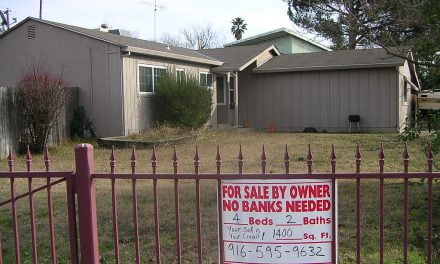This article distinguishes asset price inflation in the real estate market from consumer price inflation and analyzes the prevailing myths regarding real estate prices. For the basics on consumer price inflation, see Part I of this article series, Back to basics: inflation 101.
Asset inflation: where does real estate come in?
In contrast to consumer inflation, asset inflation must be considered in terms of various economic factors affecting asset markets, such as stocks, bonds and real estate. The primary asset that concerns us in this writing is of course real estate.
Real estate is not a commodity (i.e. a good or a service) but rather an asset. The simple distinction here can be thought of in terms of consumption: a commodity is, generally speaking, a consumable good.
Once a commodity is purchased, such as oil, it is consumed and must be replaced by further production of the commodity if it is to continue to hold its value in the economy. An asset, while either intangible or tangible (tangible in the case of real estate) is considered property held by an owner who may expect future economic opportunities during his ownership, i.e. by using it himself, leasing it to others, selling or trading it — not consuming and thus depleting it, thereby requiring it to be replaced as is the case with commodities.
The Consumer Price Index (CPI) does not measure asset inflation since asset prices behave quite differently and independently from consumer price movement.
- Consumer price inflation (CPI) is best understood as a fluctuation in the available money supply (the basic monetarist view).
- Asset inflation necessarily includes issues of supply and demand as well as interest rates, especially in terms of its relationship to mortgage funds.
Although inflation behaves differently between assets and consumer goods, the two are intimately related, that is, they are both directly affected by the amount of money in circulation. As the money supply in circulation increases, to the point it causes consumer price inflation the purchasing power of the dollar decreases and the level of real incomes is decreases in turn, thus provoking worker demand for wage increases to keep up with inflation. Think increases in rent, amounts paid for leasing a home, a consumable event, rather than the home’s sales price, which is a dollar-denominated asset listed on one’s balance sheet.
At a fundamental level, asset price inflation is affected by the money supply, but one must take it further. One must incorporate the theory of supply and demand to fully understand asset price inflation in the real estate market.
Supply and demand in real estate price inflation
Perhaps the most important factor affecting real estate price inflation, as all real estate brokers and agents understand, is the relationship between supply (marketable inventory) and demand (ready buyers) in the real estate market.
As buyer-demand for real estate outpaces the supply of property owners actively wanting to sell, the market environment produces a scarcity (in the form of lack of supply of homes for sale), and real estate prices increase (or inflate). Just as in consumer price inflation, the purchasing power of the real estate buyer diminishes since there are too many dollars chasing the asset and his dollar will now purchase a smaller percentage of the same home – less square footage – as it would have in the period prior to home price inflation.
Editor’s note — A word of caution: real estate price inflation is often confused with real estate asset appreciation. They are different and distinct, mutually exclusive if you wish. When discussing real estate prices as affected by monetary policy, what one is technically referring to is asset inflation, as we are doing here.
Real estate appreciation is just what it is called, an increase in the appreciation that buyers and sellers have for a particular parcel of real estate, usually due to an increased desire for a location. Property price appreciation is primarily driven by increases in the location’s population density and that population’s income, and not the ever-mysterious intrinsic value of a parcel of real estate.
Thus, “appreciation” is a qualitative term that reflects the human perception of a property’s value to the buyers and sellers in the marketplace, which is then reflected in pricing when there is an increased demand for the location. The prevailing lesson that the implosion of the Millennium Bubble ought to have taught the real estate brokerage community is that price and value are not always correlated and that real estate does not perpetually “appreciate” — the cardinal myths of the real estate market that ought to be banished from the realm of rational discussions concerning real estate price inflation. Suburban owners will soon fully learn this lesson.
This leads us to the next market factor that must be considered when analyzing real estate price inflation: interest rates.
Although supply and demand in the real estate market is affected by a multitude of factors: employment, investment, savings, population growth, zoning ordinances, fiscal spending, tax policy and so on, the demand for real estate is fundamentally produced by the availability of mortgage funds facilitated by lenders. In a word, real estate is most often “leveraged.”
Related article: Buyer purchasing power
Since most real estate ownership acquired to be held for the long term is not purchased with cash, the primary source for satisfying demand (and at times erroneously driving it) for purchasing real estate must come from lender financing. The availability and abundance of purchase-assist financing money is dictated by interest rates as well as the general creditworthiness and appraised collateral value held by buyers in the real estate market.
Interest rates and real estate price inflation
Since lenders hold the means of facilitating real estate transactions through their ability to provide purchase-assist financing, they are likewise the primary mover in controlling real estate price inflation, not brokers or appraisers, as lenders would have the public believe. To a certain extent, this is only part of the picture however, as the Fed plays an important role here as well by setting interest rates.
As an aside, it was this scenario gone horribly wrong (read: Fed failure) that produced the financial accelerator effect, which led to the Millennium Boom and subsequent crash of both real estate prices and bond markets. The financial accelerator effect occurs once lenders begin realizing greater profits due to asset price inflation in the real estate market. As prices go up, lenders earn greater returns on their capital regardless of the interest rate since mortgage loan principal amounts increase along with prices all for the same collateral.
Each lender of course wants more as a matter of competitive advantage, and emboldened by the notion that the collateral they are holding is “worth” more (simply a money illusion as it is still the same collateral with the same old value), they make more and larger loans to ever less qualified borrowers. This is the vicious market cycle the Fed is supposed to regulate out of existence.
Related article: Cleaning up after the ruptured housing bubble
However, consider the current landscape of the real estate market today. Prices are perceived as low, or in terms perhaps more appropriate to this study, the real estate market has suffered severe price deflation.
In actuality, today’s prices are a corrective adjustment simply returning prices to historical mean pricing levels and thus to a proper price going forward and not necessarily a low price, a term likely to reflect the user’s money illusion. In order to control against further price deflation and thus stimulate price inflation in the real estate market, the Fed has exercised its right to keep interest rates low (at zero as a matter of fact) since they are politically restrained from going negative.
Editor’s note — Presently, the Fed needs to go minus 3%, as zero rates are too high to get employment back up (and a rate of plus 2% or 4% would make conditions much worse).
If everything were working according to plan, low interest rates (combined with an injection of cash via quantitative easing) would encourage lenders to make more loans at cheaper rates to homebuyers (and businesses) rather than hold massive amounts of reserves un-lent, which is the case today.
So the thinking goes: flush the banks with cheap cash so they will then re-distribute the cash via purchase-assist financing to make willing those ready and able homebuyers by passing on the artificially low interest rate after adding a (reasonable) margin for profit of say 1.4 percentage points to the “risk-free rate” of today’s 10 year T-bill.
Related articles: Current market rates
This would produce an historically proper current mortgage rate of 3%, not the 3.6% being quoted these days. Do not expect lenders (especially Frannie) to conform since huge profits are to be had in the yield-spread premium at 3.6%.
The abundance of relatively cheap mortgage money will then lead to an increased demand for homeownership. In turn, this will support and eventually drive prices up to equilibrium level (much like the Fed attempts to control the general price level of consumer goods).
Again, consider the current real estate market. Has this worked? We think not — and there is a reason for this: a lack of homebuyer demand.
The zero lower bound and the liquidity trap (or, where’s the demand?)
The reason why this plan is not working can be summed-up with two concepts that may seem academic but are also quite simple: the zero lower bound and the liquidity trap.
The scenario described above regarding the current plan for asset inflation in the real estate market is one piece of the zero lower bound puzzle. Essentially, as lowering the interest rate is the Fed’s primary means for stimulating lending and thus home sales, there must be an interest rate baseline by which it is deemed effective.
Once rates have reached zero, as they have today, the Fed is rendered impotent. They cannot lower rates beyond the zero lower bound as is needed to spark buyers of homes into action. Otherwise, the Fed would literally be paying banks to accept cash advances, the negative interest rate position the Fed will not take at this point.
So, the interest rate is bounded at zero and we are still not seeing any (significant) movement in the mortgage lending market. Lenders are swimming in free cash facilitated by the Fed — now in a state of extreme liquidity since they have tons of cash (excess deposits with the Fed at 20 times requirements) that is not tied up in assets, such as mortgages.
Yet, credit is only available to the more qualified buyer due to unemployment, foreclosure, bankruptcy and so on rendering others to be deemed un-creditworthy (as determined by the banks via FICO).
This is the liquidity trap we are all now snared by. While cheap cash is in the system (in the bank’s coffers) but remains out of reach to prospective buyers, asset price inflation, much less one’s appreciation for California real estate is going nowhere. As a result, there is no real demand for homeownership, despite the perception of rock-bottom prices. Rates are not yet attractive enough.
Prospective buyers of real estate cannot attain the means to finance their shelter, and if they can they do not have the confidence to do it. Thus, sales today are mostly speculator-buyers, not owner-occupants, and cash is the term of purchase.
Consumer inflation is the name of this game (for now)
This brings us back full circle to consumer price inflation and the CPI. Since real estate prices are at a standstill at best, asset price inflation in the real estate market will, for some considerable time, more closely exhibit the behavior of consumer price inflation (that is, low and slow).
Related article: The equilibrium trendline: the mean price anchor
Rather than depending upon lenders to open the floodgates of liquidity that they can, make cheap mortgage money available to buyers and thus stimulate demand as they must, asset price inflation in the real estate market will only be a reality once the economy as a whole picks up. This means near- to full-employment (a long way off, try 2016 at earliest), increasing GDP beyond the population growth, and the slow but steady process of making those credit-crunched creditworthy again.
This is a description of a virtuous market cycle that begins back at the level of fundamentals where we find ourselves today. Once the ball of the California economy starts rolling again, the market will be released from the liquidity trap and those zero rates may start working.
Of course, as is axiomatic, once the zero rates do begin to work, they will not remain at zero for long, thus heralding a future of rising interest rates into the distant horizon of a decade or two, which may send prices back down after a short-lived boom, probably around 2016.
Until then, expect real estate prices to increase at the rate of consumer inflation for the foreseeable future. That’s right — two percent per annum, max. After five years of ownership, you can sell and recover your cash downpayment and principal amortization.
This means that right now California real estate, regardless of type, is a hedge against consumer inflation and nothing more, period.
Related article: The state of real estate pricing















Terrific article with lots of things to ponder. I had to read it a couple of times and take notes along the way to understand. But after all that reading it was the last statement that really confused me: “That means right now California real estate, regardless of type, is a hedge against consumer inflation and nothing more, period.” Having described real estate as an “asset” it seems it might have benefits in addition to just being a hedge against consumer inflation. How about a rental asset. If one pays cash for real estate and rents it out it becomes an income producing asset (assuming the rent exceeds the property tax and water bill). Then we have a hedge against inflation that delivers a monthly dividend. Of course, if we head into a deflationary period the value of the asset could go down along with the rental payment. In that case, wait until the asset goes up again before selling. But fluctuations occur with most assets. And real estate is going to be an asset a lot longer than many stocks, bonds, and bank accounts. The only thing I can think of that distinguishes this asset catagory from other asset catagories would be the ability of the government to confiscate it through eminent domain proceedings. Hmmmm.
.
I’m a believer in the “follow the money” technique to explain destructive economic and social effects.
Wall Street and various financial institutions who over the last half dozen years CAUSED the apparent “loss” of trillions of dollars worth of little peoples’ assets in stocks and related investments, have ended up GAINING even more UNEARNED wealth by being PAID by the same people (taxpayers) who they had fleeced because our trusty GOVERNMENT said that they were “too big to fail”. Of course, they’re even bigger now. But unfortunately, there isn’t too much little people’s wealth left up for grabs in the financial markets anymore.
Now as a result of the economic chaos and financial institutions CRIMINAL lending practices, these lucky lenders have COINCIDENTALLY ended up owning a very large part of the little peoples’ LAST remaining valuable asset, HOMES. Primarily because our trusty GOVERNMENT accidentally failed to properly regulate them.
And COINCIDENTALLY, as First Tuesday recently reported, our trusty GOVERNMENT has altered regulations so that these lucky lenders do NOT have to liquidate these properties for 5-10 YEARS. Thereby allowing them to become massively profitable LANDLORDS until prices have risen such that the REOs can be very profitably sold. Of course, by that time, at the rate things are going, it may be STANDARD for little people to ONLY rent, not “own” SFHs.
Needless to say, once the rental market is as thoroughly controlled by “regulated” big players as is communications (phones, internet etc.) and utilities (energy, water etc.), these lucky landlords can be expected to squeeze as much remaining wealth out of their not-so-lucky tenants as our trusty GOVERNMENT allows.
So, if you were a lucky lender, with virtually unlimited cost-free funds provided by the trusty GOVERNMENT and your trapped depositors, would you rather make it EASY for little people to take this valuable inventory off your hands, or would you be HAPPY and THANKFUL that the trusty GOVERNMENT has coincidentally saddled you with so many inane and ridiculous requirements that the little people market is so small as to be negligible?